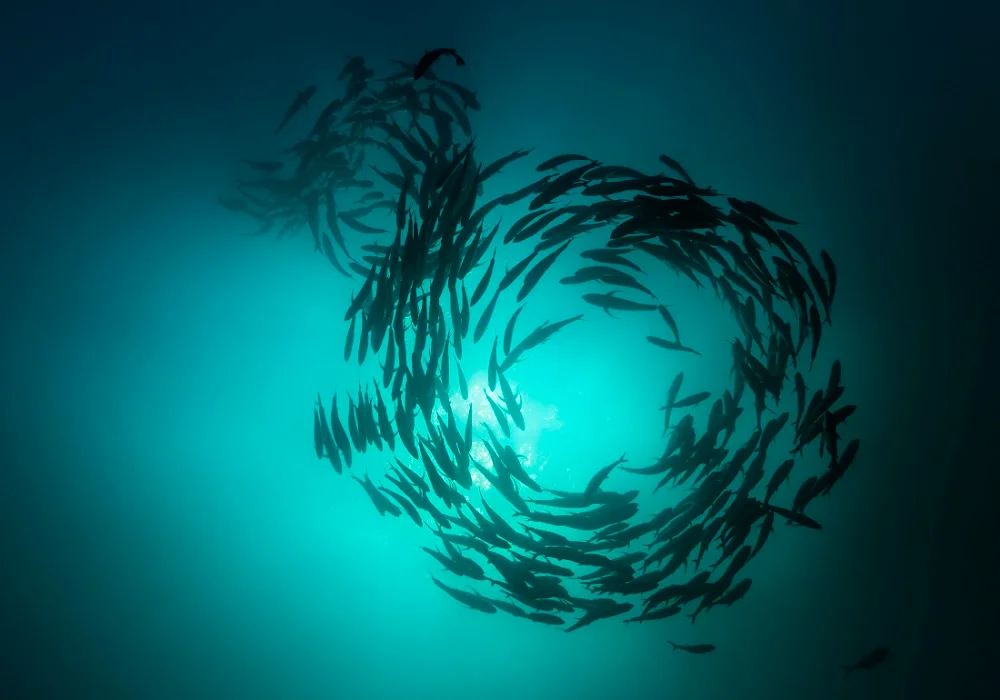risques-niger.org – The marine realm, with its vast and varied ecosystems, harbors countless secrets that have intrigued scientists and explorers for generations. From the sunlit surface waters to the dark abyss, the ocean’s hidden worlds are teeming with life, diversity, and mysteries yet to be unraveled. This article delves into the secrets of the marine realm, exploring the wonders that lie beneath the waves.
The Sunlit Surface: A World of Activity
The uppermost layer of the ocean, illuminated by sunlight, is a bustling hub of marine life. This photic zone is home to a variety of organisms, from microscopic phytoplankton that form the base of the marine food web to larger predators like dolphins and sharks. The intricate interactions within this layer are crucial for the health of the entire marine ecosystem.
The Twilight Zone: Realm of the Unseen
Below the photic zone lies the mesopelagic layer, also known as the twilight zone. This region, which extends from about 200 to 1000 meters deep, is too deep for sunlight to penetrate, creating a perpetual twilight. The twilight zone is home to a plethora of bioluminescent creatures that have adapted to the dark, such as lanternfish and deep-sea jellyfish. These organisms produce their own light for communication, mating, and hunting, illuminating the ocean’s hidden world.
The Abyss: A World of Extremes
The deepest parts of the ocean, known as the abyss, are characterized by extreme pressure, cold, and darkness. Despite these harsh conditions, the abyss is home to a variety of life forms that have evolved unique adaptations. The discovery of hydrothermal vents in the 1970s revolutionized our understanding of deep-sea ecosystems, revealing communities of organisms that thrive around these underwater hot springs. These vents support life by providing a source of energy through chemosynthesis, showcasing the resilience and diversity of life in the abyss.
The Hadal Zone: The Deepest Secrets
The hadal zone, located in the deepest parts of the ocean, such as the Mariana Trench, is the least explored and most mysterious region of the marine realm. This zone is characterized by crushing pressures and complete darkness. Yet, it is inhabited by a range of organisms, including the yeti crab and the Mariana snailfish, which have adapted to survive in these extreme conditions. The hadal zone remains one of the ocean’s last frontiers, with many secrets yet to be discovered.
Marine Protected Areas: Sanctuaries for Secrets
Marine Protected Areas (MPAs) play a crucial role in preserving the ocean’s hidden worlds. These designated zones protect marine ecosystems and the species that inhabit them from threats such as overfishing, pollution, and habitat destruction. MPAs serve as sanctuaries for marine life, allowing scientists to study these hidden worlds without the interference of human activities.
The Importance of Ocean Exploration and Conservation
The ocean’s hidden worlds are not only fascinating but also vital to the health of our planet. They provide essential ecosystem services, such as regulating climate, supporting biodiversity, and offering resources for human use. However, these hidden worlds are under threat from various human activities. It is imperative that we continue to explore and learn about these marine realms while also taking steps to conserve and protect them for future generations.
In conclusion, the ocean’s hidden worlds are a testament to the incredible diversity and resilience of life on Earth. By understanding and protecting these marine realms, we can ensure that their secrets are preserved for centuries to come. The exploration and conservation of the ocean’s hidden worlds are not just a scientific endeavor but a responsibility that we owe to our planet and to the generations that will inherit it.
